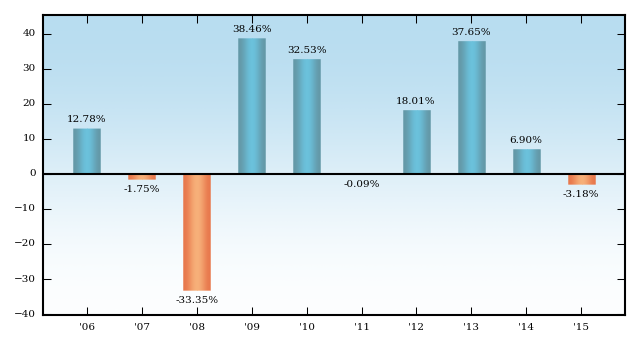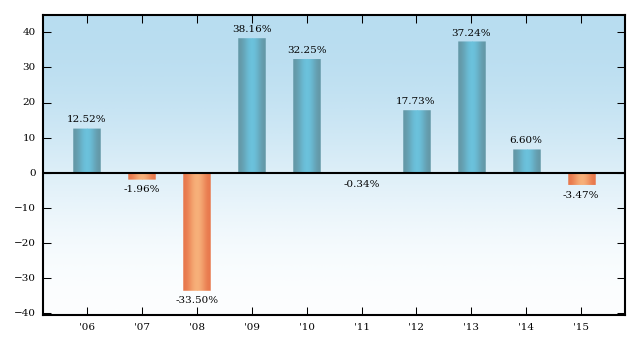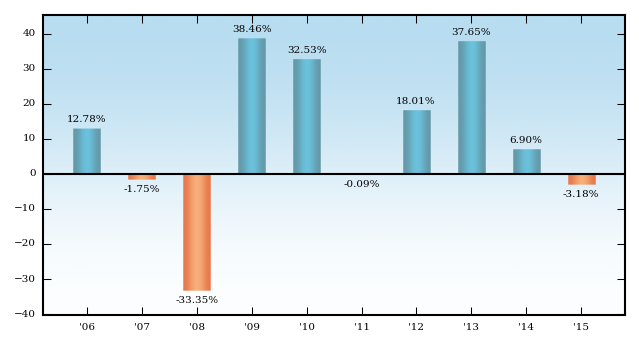| Investor Class Shares | T. Rowe Price Small-Cap Stock Fund, Inc. | ||||||||||||||||||||||||||||
| T. Rowe Price Small-Cap Stock Fund SUMMARY | ||||||||||||||||||||||||||||
| Investment Objective | ||||||||||||||||||||||||||||
| The fund seeks to provide long-term capital growth by investing primarily in stocks of small companies. | ||||||||||||||||||||||||||||
| Fees and Expenses | ||||||||||||||||||||||||||||
| This table describes the fees and expenses that you may pay if you buy and hold shares of the fund. | ||||||||||||||||||||||||||||
| Fees and Expenses of the Fund Shareholder fees (fees paid directly from your investment) | ||||||||||||||||||||||||||||
| ||||||||||||||||||||||||||||
| Annual fund operating expenses (expenses that you pay each year as a percentage of the value of your investment) | ||||||||||||||||||||||||||||
| ||||||||||||||||||||||||||||
| Example | ||||||||||||||||||||||||||||
| This example is intended to help you compare the cost of investing in the fund with the cost of investing in other mutual funds. The example assumes that you invest $10,000 in the fund for the time periods indicated and then redeem all of your shares at the end of those periods. The example also assumes that your investment has a 5% return each year and that the fund’s operating expenses remain the same. Although your actual costs may be higher or lower, based on these assumptions your costs would be: | ||||||||||||||||||||||||||||
| ||||||||||||||||||||||||||||
| Portfolio Turnover | ||||||||||||||||||||||||||||
| The fund pays transaction costs, such as commissions, when it buys and sells securities (or “turns over” its portfolio). A higher portfolio turnover rate may indicate higher transaction costs and may result in higher taxes when fund shares are held in a taxable account. These costs, which are not reflected in annual fund operating expenses or in the example, affect the fund’s performance. During the most recent fiscal year, the fund’s portfolio turnover rate was 20.4% of the average value of its portfolio. | ||||||||||||||||||||||||||||
| Investments, Risks, and Performance Principal Investment Strategies | ||||||||||||||||||||||||||||
The fund will normally invest at least 80% of its net assets (including any borrowings for investment purposes) in stocks of small companies. The fund defines a small company as one whose market capitalization falls (i) within or below the current range of companies in either the Russell 2000 Index or the S&P SmallCap 600 Index or (ii) below the three-year average maximum market cap of companies in either index as of December 31 of the three preceding years. The Russell 2000 and S&P SmallCap 600 Indices are widely used benchmarks for tracking small-cap stock performance. As of December 31, 2015, the market capitalization ranges for the Russell 2000 Index and the S&P SmallCap 600 Index were approximately $14.8 million to $6.4 billion, and $58.5 million to $4.6 billion, respectively. The market capitalizations of the companies in the fund’s portfolio and the S&P and Russell indexes change over time; the fund will not automatically sell or cease to purchase stock of a company it already owns just because the company’s market capitalization grows or falls outside this range. The fund may, on occasion, purchase companies with a market capitalization above the ranges. When choosing stocks, we generally look for one or more of the following characteristics:
In pursuing its investment objective, the fund has the discretion to deviate from its normal investment criteria. These situations might arise when the fund’s adviser believes a security could increase in value for a variety of reasons, including an extraordinary corporate event, a new product introduction or innovation, a favorable competitive development, or a change in management. While most assets will typically be invested in U.S. common stocks, the fund may invest in foreign stocks in keeping with the fund’s objectives. The fund may sell securities for a variety of reasons, such as to secure gains, limit losses, or redeploy assets into more promising opportunities. | ||||||||||||||||||||||||||||
| Principal Risks | ||||||||||||||||||||||||||||
| As with any mutual fund, there is no guarantee that the fund will achieve its objective. The fund’s share price fluctuates, which means you could lose money by investing in the fund. The principal risks of investing in this fund are summarized as follows: Active management risk The fund is subject to the risk that the investment adviser’s judgments about the attractiveness, value, or potential appreciation of the fund’s investments may prove to be incorrect. If the investments selected and strategies employed by the fund fail to produce the intended results, the fund could underperform in comparison to other funds with similar objectives and investment strategies. Risks of U.S. stock investing Stocks generally fluctuate in value more than bonds and may decline significantly over short time periods. There is a chance that stock prices overall will decline because stock markets tend to move in cycles, with periods of rising and falling prices. The value of a stock in which the fund invests may decline due to general weakness in the U.S. stock market, such as when the U.S. financial markets decline, or because of factors that affect a particular company or industry. Investment style risk Different investment styles tend to shift in and out of favor depending on market conditions and investor sentiment. Because the fund may hold stocks with either growth or value characteristics, it could underperform other stock funds that take a strictly growth or value approach to investing when one style is currently in favor. Growth stocks tend to be more volatile than the overall stock market and can have sharp price declines as a result of earnings disappointments. Value stocks carry the risk that the market will not recognize their intrinsic value or that they are actually appropriately priced at a low level. Small-cap stock risk Investing primarily in issuers within the same market capitalization category carries the risk that the category may be out of favor due to current market conditions or investor sentiment. Because the fund invests primarily in securities issued by small-cap companies, it is likely to be more volatile than a fund that focuses on securities issued by larger companies. Small-sized companies often have less experienced management, narrower product lines, more limited financial resources, and less publicly available information than larger companies. In addition, smaller companies are typically more sensitive to changes in overall economic conditions and their securities may be difficult to trade. Foreign investing risk This is the risk that the fund’s investments in foreign securities may be adversely affected by local, political, social, and economic conditions overseas, greater volatility, reduced liquidity, or decreases in foreign currency values relative to the U.S. dollar. | ||||||||||||||||||||||||||||
| Performance | ||||||||||||||||||||||||||||
| The bar chart showing calendar year returns and the average annual total returns table provide some indication of the risks of investing in the fund by showing how much returns can differ from year to year and how the fund's average annual returns for certain periods compare with the returns of a relevant broad-based market index, as well as with the returns of one or more comparative indexes that have investment characteristics similar to those of the fund. The fund's performance information represents only past performance (before and after taxes) and is not necessarily an indication of future results. The fund can also experience short-term performance swings, as shown by the best and worst calendar quarter returns during the years depicted. | ||||||||||||||||||||||||||||
| Small-Cap Stock Fund Calendar Year Returns | ||||||||||||||||||||||||||||

| ||||||||||||||||||||||||||||
| ||||||||||||||||||||||||||||
| In addition, the average annual total returns table shows hypothetical after-tax returns to demonstrate how taxes paid by a shareholder may influence returns. After-tax returns are calculated using the historical highest individual federal marginal income tax rates and do not reflect the impact of state and local taxes. Actual after-tax returns depend on an investor’s tax situation and may differ from those shown. After-tax returns shown are not relevant to investors who hold their fund shares through tax-deferred arrangements, such as a 401(k) account or individual retirement account. In some cases, the figure shown for “returns after taxes on distributions and sale of fund shares” may be higher than the figure shown for “returns before taxes” because the calculations assume the investor received a tax deduction for any loss incurred on the sale of shares. | ||||||||||||||||||||||||||||
| Average Annual Total Returns Periods ended December 31, 2015 | ||||||||||||||||||||||||||||
| ||||||||||||||||||||||||||||
| Updated performance information is available through troweprice.com or may be obtained by calling 1-800-225-5132. | ||||||||||||||||||||||||||||

